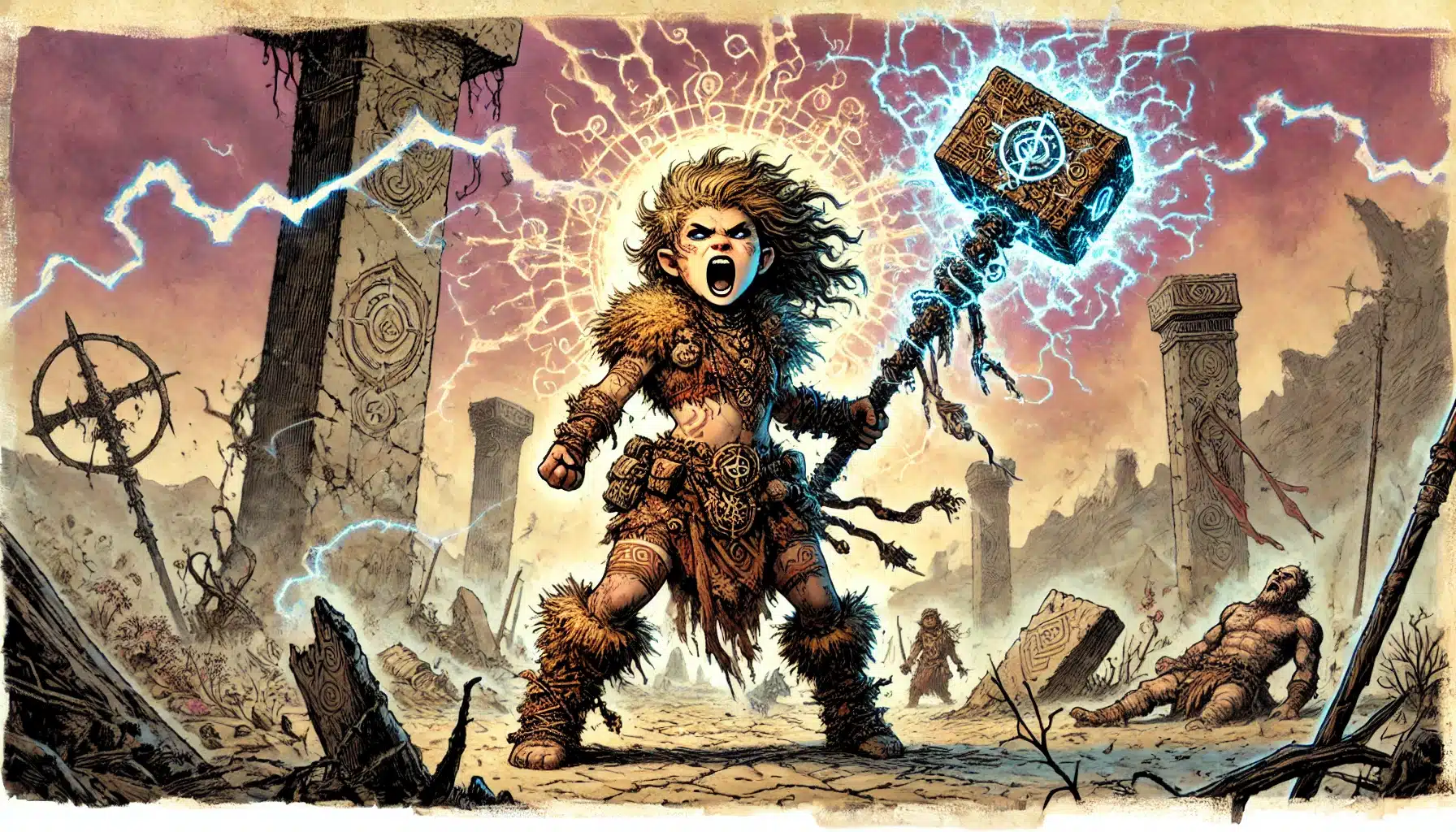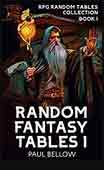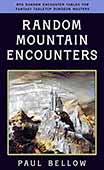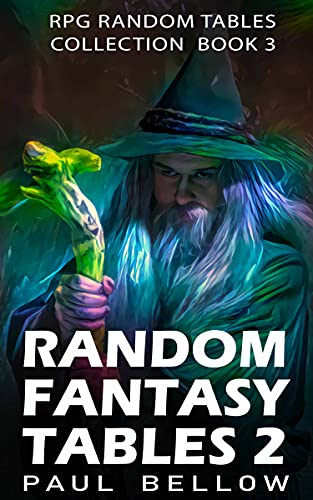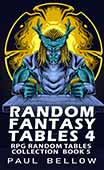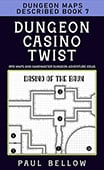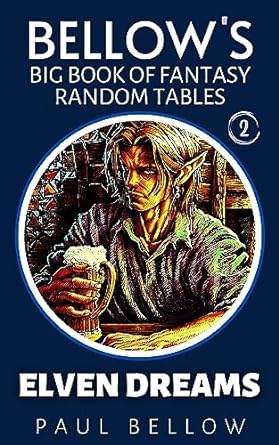Salvage or Starve: Welcome to D&D’s Apocalypse
There’s an electricity in the air when you toss aside the safety nets of high fantasy—when castles are crumbled, ley lines are severed, and dragons are just as desperate as the mortals they once terrorized. Post-apocalyptic Dungeons & Dragons isn’t just about new monsters or ruined landscapes; it’s a total recalibration of what it means to survive, adapt, and find hope on the far side of disaster. The thrill of the unknown becomes your constant companion. Every rusted hinge and whispering wind carries promise and danger in equal measure.
Stripped of bustling marketplaces and benevolent lords, characters find themselves scrounging for scraps amidst the bones of fallen civilizations. Elegant spellbooks have become damaged tomes, torn recipes for magic that might burn as often as illuminate. Food, clean water, even a safe place to sleep—all are now hard-won trophies. There’s a tactile satisfaction in making the mundane meaningful, and a haunting vulnerability that pulses through every long rest.
The tone is an exhilarating inversion. Gone is the security of predictable supplies and patron-driven questing. In their place: scarcity, mutation, and ruin. Magic feels dangerous again—radioactive or unstable, its laws warped by catastrophe. Steel rusts, herbs wither, and even gods might answer prayers with silence or madness. Each artifact salvaged is precious not for its power, but for its potential to stave off starvation or unlock a tiny advantage.
Inspiration seeps in from all corners—ashen nuclear wastelands, sprawling magical battlefields poisoned by spellfire, echoes of gods who abandoned their faithful, or plagues that turned the dead into ever-hungry legions. The apocalypse in D&D can be anything, so long as it is transformative and absolute. It is the reason the world hurts, and the lens through which every test of courage and wit is framed.
Players step forward no longer as saviors of a golden age, but as scavengers, heirs to mistakes and abandoned secrets. It’s important to recalibrate their expectations: heroism means keeping the fire alive for one more night, not simply toppling the evil lord. Tropes like the knight in shining armor or the beloved high wizard become ghosts, their meaning reimagined amid rubble, hunger, and mutation.
For Dungeon Masters, this is a playground of consequence and improvisation. The world responds to hungry bellies, clever jury-rigs, and the ever-present threat of omnipresent decay. Don’t shrink from hard choices or let the world grow dull in its suffering—find the moments of fragile beauty. Make every drop of hope earned, every mutation a gamble, and every ally a potential traitor or savior. Let the players write the next chapter in dust and dreams.
Try my AI Tabletop RPG generators...and an extensive library of content!
Building a Post-Apocalyptic World
Constructing a post-apocalyptic D&D setting isn’t just a matter of flavor text or scattering ruinous landscapes; it’s a deliberate, immersive process of world-shaping that touches every facet of play. The first fork in the road is the cause of the apocalypse—whether the world was shattered by all-consuming magical war, forsaken by retreating gods, or riven by an unending undead plague. Each traumatic genesis sculpts the ongoing reality: spellblasted wastelands, temples choked with silence, cities haunted by memory and rot.
A magical cataclysm might render entire regions wild with unpredictable surges. Reality itself becomes patchwork, with shattered ley lines creating zones where the fabric of spellcasting—and reality—frays and unravels. Residual magics might crack the earth, warp flora into twisted sentience, or turn the dead into catalysts of unstable power. Even the act of casting a spell becomes dangerous, injecting every encounter with a delicious injection of risk.
If the gods have abandoned the world, faith becomes currency and desperation. Clerics, paladins, and warlocks must seek out cracked idols, struggling for morsels of divine power. Holy places might serve as sanctuaries—or traps—while prophets and zealots prey on the despairing. Survival doesn’t mean merely hunting or foraging, but wrestling with spiritual emptiness amid a battered pantheon.
The fallout of an undead plague—or any supernatural catastrophe—reshapes civilization as fiercely as landscape. Towns wall themselves off behind iron and salt, while curses and disease run riot in the hinterlands. Settlements band together, hoarding knowledge and resources, haunted by the knowledge that the next mistake could be their last. Society is achingly fragile, held together by mutual need and brittle alliances.
⚔️ Fantasy RPG Random Tables Books
Make life as a Gamemaster easier…
If you play Dungeons & Dragons, Pathfinder, or other fantasy RPGs, this
RPG random tables series
is packed with encounters, NPCs, treasure, and more. Available in eBook or print—either way, you’ll have a wealth of adventure ideas at your fingertips.
Tone is paramount. It’s not just bleak despair; there’s wild beauty in the rebirth of the world, in the scrappy determination of survivors, and the small moments of hope that break through the gloom. DMs should build systems and societies that feel shaped by desperation but never rendered pointless by it, maintaining a balance between constant struggle and unforgettable triumph.
15+ Worldbuilding Elements for Post-Apocalyptic D&D
- Shattered ley lines that intermittently spark with wild magic
- Scorched, glassy cities haunted by echoing memory-spirits
- Roaming junker automatons pieced together from ancient war machines
- Feral spellcasters mutating each time they cast magic
- Broken gods, exiled or half-awake, offering twisted “blessings”
- Terrain that shifts and collapses beneath survivor’s feet
- Psychic storms that warp the mind and rewrite memory
- Cannibalized settlements made from relics and scrap
- Pillars of light marking unstable dimensional fractures
- Charnel fields where undead spawn endlessly
- Overgrown citadels choked with viral, carnivorous plants
- Nomad tribes worshiping fallen stars or abandoned constructs
- Cursed relics that demand sacrifice for power
- Ancient libraries turned into warren-like fortresses
- Trade routes blocked by mutated beasts or arcane hazards
- Divine “famine” areas where healing magic and resurrection fail
- Blackmarket enclaves hoarding pre-fall alchemy or technology
- Ruined magic academies, spires teetering above arcane exclusion zones
Regions and Ruins
Geography in the aftermath doesn’t just mean “more wasteland.” The apocalypse sculpts the very bones of the world, creating landscapes with razor-edged danger and twisted beauty. Deep rifts, dead spots where magic sputters and dies, and haunted dead zones scribble new borders on the old maps. Every region demands adaptation—travel is slower, risk is higher, and every expedition feels like an expedition into the unknown.
Contaminated zones rupture with toxic spores, radiation, or residual enchantment. Travelers must weigh every step, wary of invisible hazards that gnaw at health, mind, or even the soul. These places might repel most life, but are treasure troves for the courageous (or desperate).
Other regions are defined by absence: places where the fabric of magic is dead, draining the world of color, sound, even hope itself. Without magic, normal survival tools—healing spells, enchanted torches—are useless. Adventuring here is an exercise in planning and bravery, forcing players to rely on wit, not power.
Relic cities are overgrown with grasping flora and warped by semi-sentient roots, where every crumbling rooftop or flooded market could yield a priceless salvage or a lurking horror. Modular design allows these locales to mix and match. Each table spin or random roll can produce a new, intriguing hazard—keeping exploration tense and surprising.
| Region Name | Environment Type | Threat Level | Key Features |
|---|---|---|---|
| Ashgrove Chasm | Dead forest | Medium | Invisible predators, crumbling shrines |
| The Effluent Sprawl | Flooded ruins | High | Caustic water, mutant eels, floating debris |
| Mourning Plains | Withered steppe | Low | Whispering winds, sun-bleached bones |
| The Radiant Maw | Glowing fissure | Severe | Unstable magic, hallucinations, shard storms |
| Spiralcrown Harbor | Overgrown port | Medium | Swarming vines, sentient mold, lost ships |
| Frostveil Hollow | Ice-choked valley | Medium | Flash freezes, scavenger bands, deep crevices |
| Oracle’s Sink | Dust basin | High | Time anomalies, dust elementals, vision pools |
| Sunken Forge | Collapsing foundry | Severe | Molten pits, iron wraiths, gravity flux |
| Lantern Mire | Swamp | Low | Luminous fog, bone leeches, drowned relics |
| Crownless Keep | Broken fortress | Medium | Haunted halls, phantom banners, spectral lords |
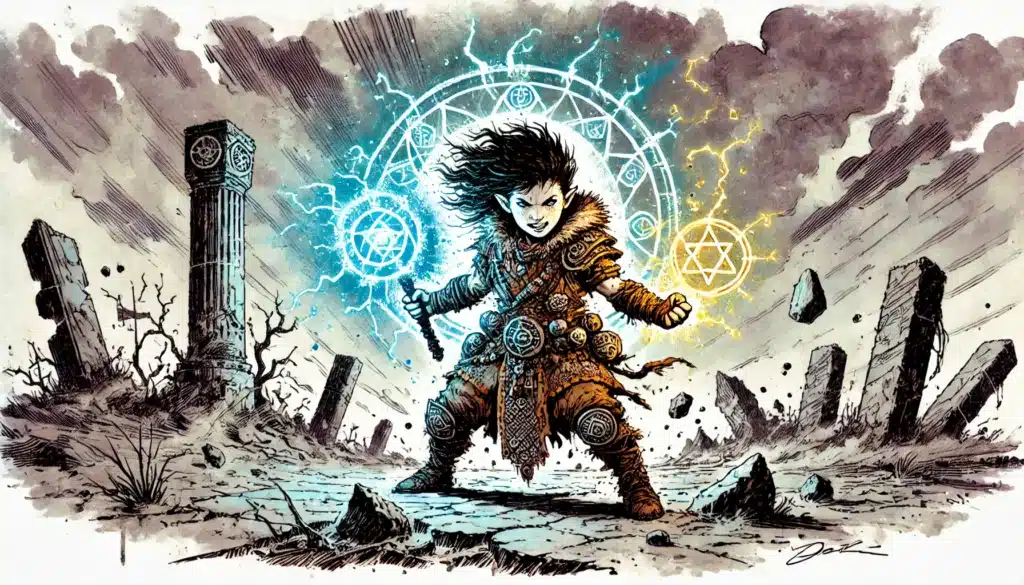
Resource Management as Gameplay Pillar
In post-apocalyptic D&D, scarcity isn’t a set dressing; it’s the trembling heart of every adventure. The struggle is tactile and primal: food, water, medicine, and even the very means to cast a spell are precious and perilous to find. Tracking resources transforms every encounter, debate, and discovery into a small saga of survival.
Where traditional D&D might treat supplies as a background detail—easily replenished at any friendly inn—after the fall, each crumb of bread and vial of clean water matters. Inventory becomes a living narrative: hard-won, hoarded, and sometimes bitterly lost. The DM’s ledger is no longer filled with gold pieces, but with drought-weighted rations and whisper-thin hopes for the next cache.
The tension isn’t just mechanical—it’s psychological. Desperation can spawn in-fighting, harsh bargaining, or bursts of generosity that flicker like lanterns in the gloom. Injury or disease might mean days of suffering as supplies dwindle, and every trade or theft becomes a test of both morals and wits.
Scarcity means every resource depletion is a plot hook. Can you trust the merchant with the last antibiotic? Will that foraged berry be edible, or hallucinogenic? Managing supplies can feel oppressive, but it isn’t meant to crush hope—rather, it’s to stoke ingenious problem solving, turning even a rain barrel or scavenged scrap into lifelines.
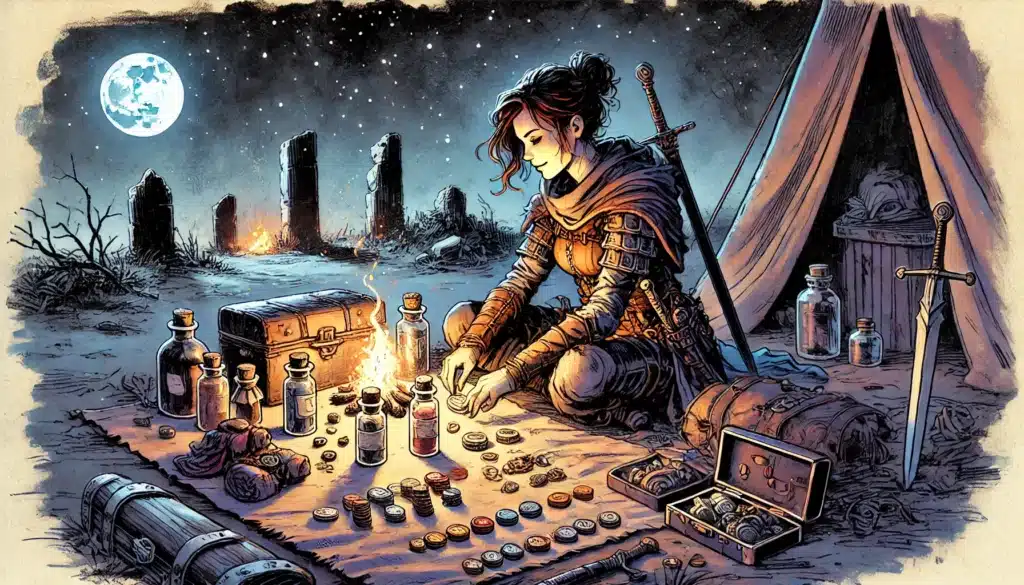
Supply Systems That Matter
Resource management doesn’t have to be tedious or punitive—done right, it’s a crucible for creativity and tension. Consider incorporating mechanics that bring supplies into the limelight without bogging the game down. Pack weight, spoilage, resource decay, and barter are not merely bean-counting—they can be flavorful catalysts for action.
Encourage players to treat even mundane items like treasure. A flask of oil might ward off the darkness—or serve as impromptu fuel for a scorched-earth escape. The barter system breathes life into settlements, transforming towns into tense bazaars of rumor and necessity.
⚔️ Fantasy RPG Random Tables Books
Make life as a Gamemaster easier…
If you play Dungeons & Dragons, Pathfinder, or other fantasy RPGs, this
RPG random tables series
is packed with encounters, NPCs, treasure, and more. Available in eBook or print—either way, you’ll have a wealth of adventure ideas at your fingertips.
A little friction opens the door for heroism. A group that cleverly stretches a weeks-long ration, manipulates pack space, or repurposes junk will feel genuine pride—not just for slaying monsters, but for surviving another cold, hungry night.
14+ Survival-based Resource Mechanics
- Rot rolls for food after each day exposed to the elements
- Inventory wear and tear during acid storms or dustwhirls
- Morale drops when party goes a day without full rations
- Water purity checks for each container refilled in the wild
- Miscast chance for spells if components are improvised
- Barter point system for trading salvage at settlements
- Weight limits based on available pack animals or sleds
- Spoilage clock for perishable supplies
- Random salvage tables for wilderness or ruin exploration
- Salvage “duffel” slots for large, awkward items
- Endurance checks for forced marches with heavy packs
- Alchemical stabilization rolls to preserve herbs
- Priority claims for loot based on faction agreements
- Resource decay due to magical contamination
- Reputation system tied to reliability in delivering supplies
- Scavenging bonuses for taking extra time or using specialized tools
Encumbrance and Logistics
Item management should challenge characters, not exhaust players. Lean into abstract encumbrance: instead of tracking every pound, set clear, narratively-driven slots for “small,” “medium,” or “large” items. Loot and pack limits might be dictated not just by the party’s strength, but by what local settlements can trade, repair, or store.
Tying encumbrance to faction control adds an unpredictable wrinkle—powerful groups might limit what outsiders can carry or demand tolls on certain items. Any infrastructure—carts, sleds, stables—becomes precious as much for hauling as for protection.
Finally, let logistics serve the narrative. Carrying extra salvage might slow a retreat, but ditching it could mean missing out on lifesaving tech or trade leverage. The real fun is in the choices: travel light and fast, or slow and prepared, weighed down by the dreams of what you might build next.
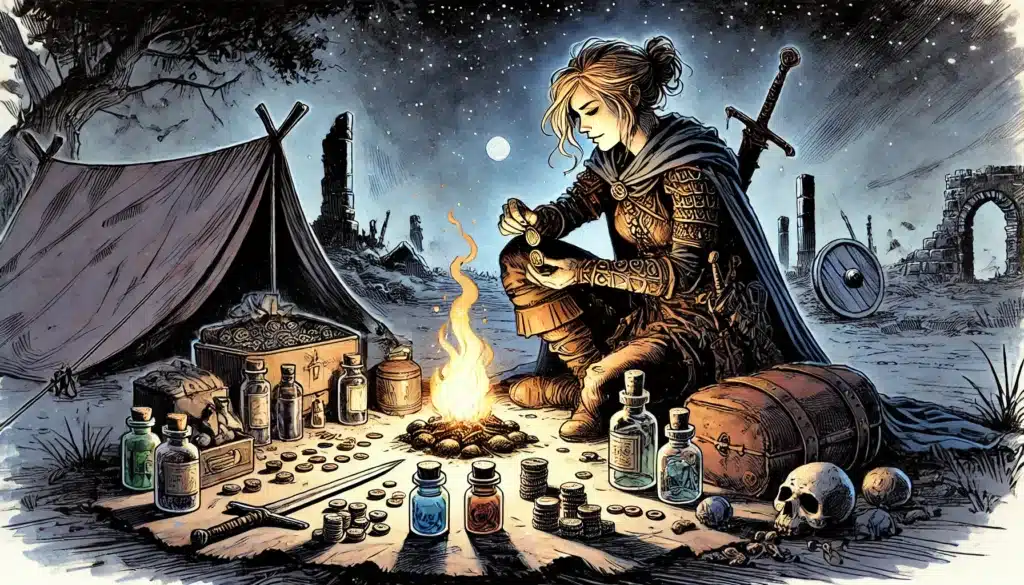
Mutation and Transformation Rules
Mutation isn’t just a trope; it’s a core mechanic in post-apocalyptic campaigns. Where once the strange and monstrous were slain for XP, now mutation is part of the survivors’ toolkit—and their greatest fear. It’s the unpredictable poison in the world’s veins, often offering more than just grotesque physical changes. Mutations could be blessings, curses, or ambiguous kin, bestowing powers as often as they demand a price.
Flavor abounds: magical corruption might spawn glimmering scales or explosive outbursts of wild magic; radioactive zones could bleach hair into ghostly shock and grant eerie immunities; abyssal influences might seep into one’s veins, manifesting as shadowy appendages or whispering voices. Mutation should always be double-edged, offering players carrots and sticks in equal measure.
Unpredictability is the high note of mutation tables. Some players may chase the risk for raw power, others desperately try to resist inevitable change. The most compelling systems let players adapt, manage, or gamble on fate, finding clever ways to mitigate or embrace their new forms.
Most importantly, present mutation as an evolving process, not a static change. Afflicted heroes may find themselves slowly succumbing to instability—powers grow at a cost, and the cost is always lurking just out of sight. Offer opportunities to bargain, to find hope or damnation in equal measure.
18+ Mutation Effects (Beneficial and Detrimental)
- Glowing Blood (dim light in 10ft radius, attracts predators)
- Third Arm (advantage on grapples, -1 to Stealth)
- Sensory Collapse (disadvantage on Perception checks)
- Chitinous Hide (natural armor, reduced flexibility)
- Forked Tongue (speech impediment, advantage on Insight)
- Extra Eyes (see 360°, susceptible to flash effects)
- Bark-like Skin (resist cold, vulnerable to fire)
- Shadow Limbs (can manipulate objects, -2 to social checks)
- Fungal Growths (advantage vs. poison, risk of spore infection)
- Warped Jaw (bite attack, cannot pronounce spell components)
- Elongated Limbs (increased reach, -2 to Acrobatics)
- Echoing Voice (advantage on Intimidation, -2 to Stealth)
- Crystal Veins (spells cost extra hit dice, resistance to necrotic)
- Prehensile Tail (may wield extra light weapon, -1 to balance checks)
- Mutant Lungs (breathe water, disadvantage on Athletics)
- Magnetized Bones (attract metal, advantage on finding relics)
- Flickering Shadow (partial invisibility, random wild magic surge)
- Plated Skull (resistance to psychic, extra weight slows movement)
Mutation Progression and Risk
Mutations, in this setting, accumulate as a reflection of the world’s growing grip on the characters. Each exposure to strange magic, radiation, or abyssal touch increases the tally—a cold ledger tracking not just changes, but the mounting risk of losing one’s humanity altogether.
Try my AI Tabletop RPG generators...and an extensive library of content!
Dungeon Masters might use “Mutation Points”—thresholds that, when crossed, trigger transformation events. Not every point adds a new effect; some make existing mutations more severe or unstable. At higher levels, the party may encounter instability rolls, manifesting as sudden reversions, wild surges, or uncontrollable outbursts.
Risk and reward should ride side by side. Low thresholds tantalize: a glowing eye might grant darkvision, but too many mutations tip the character toward non-humanoid monstrosity, permanent NPC status, or even campaign-ending eruptions. This tightrope walk feeds roleplay tension: do you risk one more venture into the rad-storm, hoping the new ability outweighs the price?
Tracking is best kept simple—use a character sheet section for mutation effects, note triggers, and mark instability payments. Both player and DM should clearly know what’s at stake with each gamble. It’s potent drama—agency is key to ensuring every risk is meaningful rather than punitive.
Factions and Ideologies Shaped by Mutation
Mutation defines not just bodies, but the philosophies, fears, and hierarchies of the people left behind. Entire cults may embrace mutation, claiming it as proof of spiritual favor or evolutionary destiny. These sects wield their changes as symbols and weapons—priests who glow with holy rot, or chieftains with extra limbs as tokens of their rule.
Not all groups are so enthusiastic. Others guard their “purity” jealously, hunting mutants, imposing hard choices on their members, or selling snake-oil cures for mutation at old-world prices. Some may perform strange eugenics, treating mutation as a curse to be culled, not a power to be mastered.
Between these extremes lie rogue scientists, mutated royalty, and zealots who worship the unseen forces of the apocalypse. The world’s shifting rules give rise to wild ideologies—and new models of power, loyalty, and heresy.
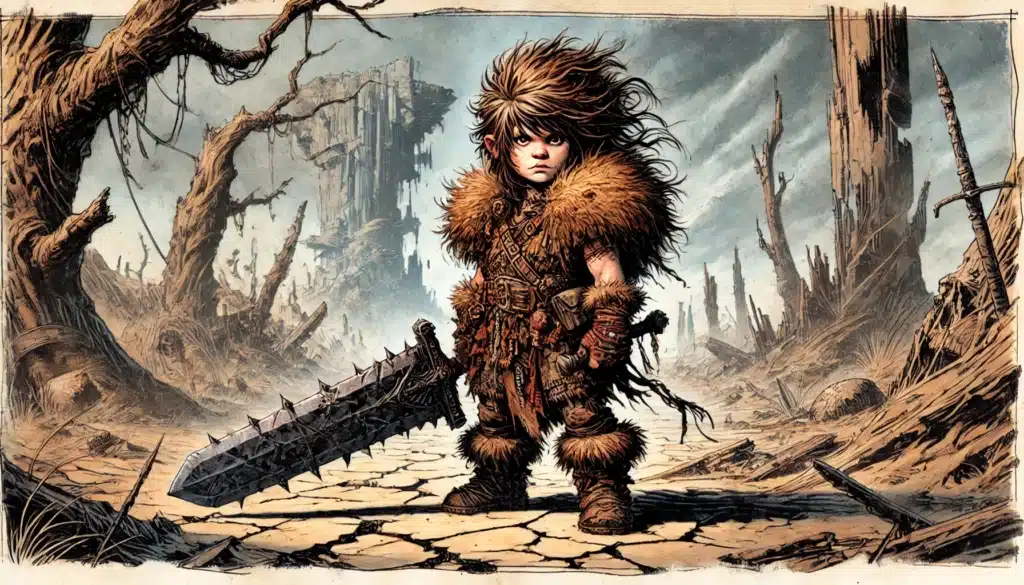
Salvage Mechanics: Making Loot Matter Again
In the world after the fall, treasure loses its polish. Gold coins are little more than shiny baubles, while true value is found in what can be scavenged, repaired, or repurposed—from the gears of a fallen automaton to the stitched hide of a mutated beast. Salvaging is equal parts hope and desperation; every pile of ruined tech or forgotten alchemy harbors promise and peril.
Scavenging replaces the “magic shop” of old. Isolated labs, ruined towers, and shattered war machines become dungeons in miniature, each a puzzle box filled with strange salvage. Players must weigh the risk of exploration (and exposure to hazards) against the chance of acquiring rare parts, secret blueprints, or just enough supplies to get through one more week.
Crafting becomes the new currency. Want armor? Maybe you’ll have to patch it together from monster chitin and shattered glass. Hoping for a magic weapon? Try splicing a cracked wand onto an ancient pistol—if you can decipher the faded blueprints. Even a simple healing salve may need ingredients harvested from a deadly swamp or haggled from a suspicious trader.
The risks of salvage are real. Treasures might be contaminated, cursed, or booby-trapped by desperate survivors or ancient security systems. But every haul is a story in itself—a hard-won victory, a gamble, a signature of the party’s ingenuity.
This system rewards problem-solving and teamwork. DMs are encouraged to design sites with modular loot tables (see below) rather than static treasure chests—let the drama play out in the scrape of metal on stone, or the hurried debate over what to haul back to camp.
| Salvage Type | Can Be Turned Into | Risk Factor |
|---|---|---|
| Rusted gears | Improvised trap | Medium |
| Fractured spell gems | Unstable wards | High |
| Monster chitin | Light bio-armor (AC 13) | Low |
| Corroded wires | Signal relays or lockpicks | Low |
| Shardglass | Explosive grenades, poisoned blades | Medium |
| Withered tomes | Spell scroll fragments | High |
| Smashed lenses | Signal mirrors, vision enhancers | Low |
| Moldering reagents | Basic medicine, toxic powder | High |
| Copper tubing | Water filtration kits | Low |
| Iron lockboxes | Reinforced shields, trap triggers | Medium |
| Arcane batteries | Power packs, one-use magic items | High |
| Twisted pistons | Crossbow upgrades, limb prostheses | Medium |
Crafting from the Wreckage
A robust salvage-based crafting system unlocks player creativity and agency. Crafting isn’t a cookie-cutter affair; it’s a risky, experimental process built on blueprints, trial, error, and scavenging. Require a combination of rare and common components, and success (or failure) hinges on player ingenuity and skill checks.
Blueprints—whether found, remembered, or improvised—are as valuable as the components themselves. Give players hints of what might be possible: a page torn from a pre-fall journal, a schematic discovered in a time-locked vault, or a rumor traded over a smoky campfire.
Failure should be dramatic, not just a “nothing happens.” Fumbled builds might explode, draw unwanted attention, or create dangerous but fascinating new hazards. A working item may only function for a while—a battered arc-wand might have a few shots before it shorts out for good, forcing players to keep searching for solutions.
⚔️ Fantasy RPG Random Tables Books
Make life as a Gamemaster easier…
If you play Dungeons & Dragons, Pathfinder, or other fantasy RPGs, this
RPG random tables series
is packed with encounters, NPCs, treasure, and more. Available in eBook or print—either way, you’ll have a wealth of adventure ideas at your fingertips.
More than just mechanics, encourage narrative ingenuity. Give players rewards for thinking outside the box and bending the rules of the old world, even if it means muddying the line between tech and magic. This is a setting where unicorn horns can be batteries, and a potion of healing might come in a rusty hypodermic.
15+ Salvage-to-Item Recipes
- Broken wand + copper wire = Unstable arc blaster (2 charges, then explodes)
- Monster chitin + alchemical oil = Bio-armor (AC 13, 1/day damage resistance)
- Fractured spell gem + old lens = Anti-magic goggles (fragile)
- Corroded wires + clockwork torso = Animated hand-servant
- Moldering reagents + herbal kit = Healing salve (save vs. poisoning)
- Shardglass + torch head = Incendiary trap (ignites small area)
- Arcane battery + signal mirror = One-shot distress beacon
- Iron lockbox + monster fangs = Spiked knuckledusters
- Copper tubing + woven cloth = Water purifier (filters 3 uses)
- Twisted piston + broken shield = Prosthetic limb (temporary)
- Withered tome + lamp oil = Burning scroll (read, then consumes itself)
- Smashed lens + string = Hidden tripwire alarm
- Monster bone + string = Fishing kit (improvised)
- Rusted gear + leather = Caltrops (causes bleed)
- Crystallized sap + silver coin = Alchemical grenade (area freeze)
- Ash residue + wax = Smoke bomb (single use, blinds)
- Bone dust + glass vial = Rare poison (sleep-inducing)
- Moldy bread + hard cheese = Survival ration (boost morale, 1 use)
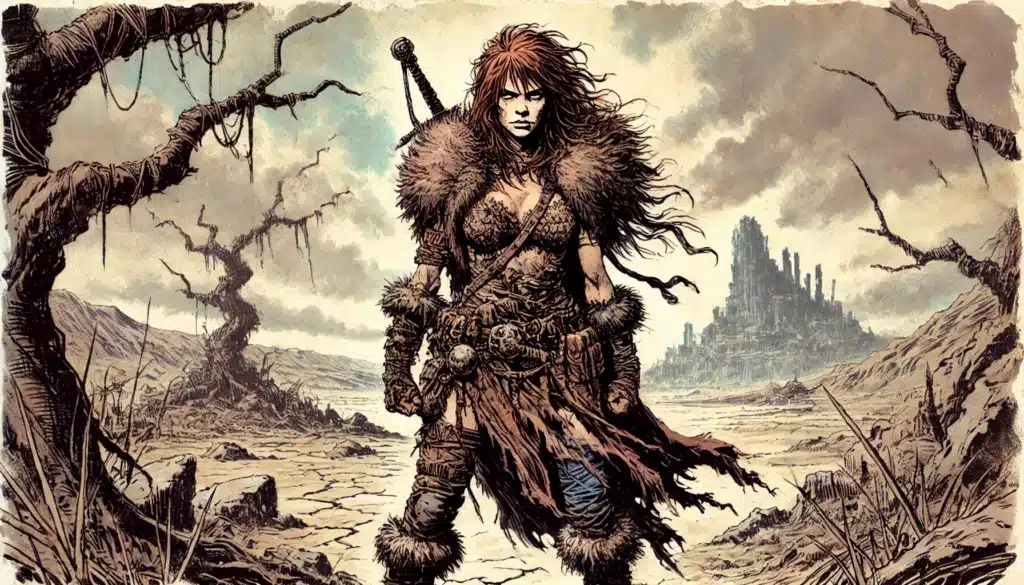
Running the World After the Fall
Being a Dungeon Master in the aftermath is both exhilarating and daunting. Every session is steeped in uncertainty and consequence: a stolen loaf of bread can trigger a riot, a found relic can topple settlements, and even the smallest mistake might doom an entire enclave. The classic “quest” becomes soup—fluid, sharp, and nourishing if you let the urgency of survival breathe through each narrative choice.
The overarching tone is desperation, but not despair. Players are the breakers of cycles—they reweave hope from wreckage and risk. The world must press down, sure, but it should always allow for ingenuity: clever play is rewarded, and so is compassion, even if it’s dangerous.
Consequences are sharper—but so are moments of human triumph. Ally with a twisted mutant to survive a rain of glass, and you forge unbreakable trust. Patch together a prayer by candlelight, and maybe a broken god whispers back. Let the dice and the players build the legend, step by uncertain step.
The DM’s role is to strike a balance between adversity and possibility. Don’t be afraid to let the world bite, but always leave room for the green shoots of hope—a rumor about an untouched orchard, a lost map to a functioning library, a night spent safely around a communal fire.
Above all, remember: post-apocalyptic D&D is about the promise of something after loss. Every scrap, every risk, every mistake has a purpose. The world after the fall is a shattered mosaic—each piece jagged, but together forming a story as rich and heartbreaking as any fairy tale of old.
Themes That Hit Harder After Collapse
Redemption pulses at the core of every apocalyptic story. Characters labor to reclaim meaning from ashes—atoning for personal or ancestral failings, or simply trying to right one unendurable wrong. That quest can become a torch, guiding not just the player but the world that watches them.
Sacrifice is no longer an abstract ideal; it’s the currency of survival. Players must choose when to share a precious ration, when to risk everything for another’s hope. In these moments, the world gains color and weight—not just a bleak background, but something worth healing.
Rebuilding becomes a genuine labor. Every alliance, fragile truce, or patchworked tool is a victory against entropy. The party doesn’t just fight monsters; they fight emptiness, mending the edges of society with whatever they can scrounge, create, or revive.
Legacy means more than loot piles. Every brave choice, every tiny kindness, and every desperate gamble plants seeds for the future—if the characters survive long enough to see them sprout. DMs should find ways to spotlight moments of unexpected beauty: a sunrise glimpsed between ruined towers, a forgotten song sung at the edge of a dark chasm, or a rescued child’s first hesitant laughter.
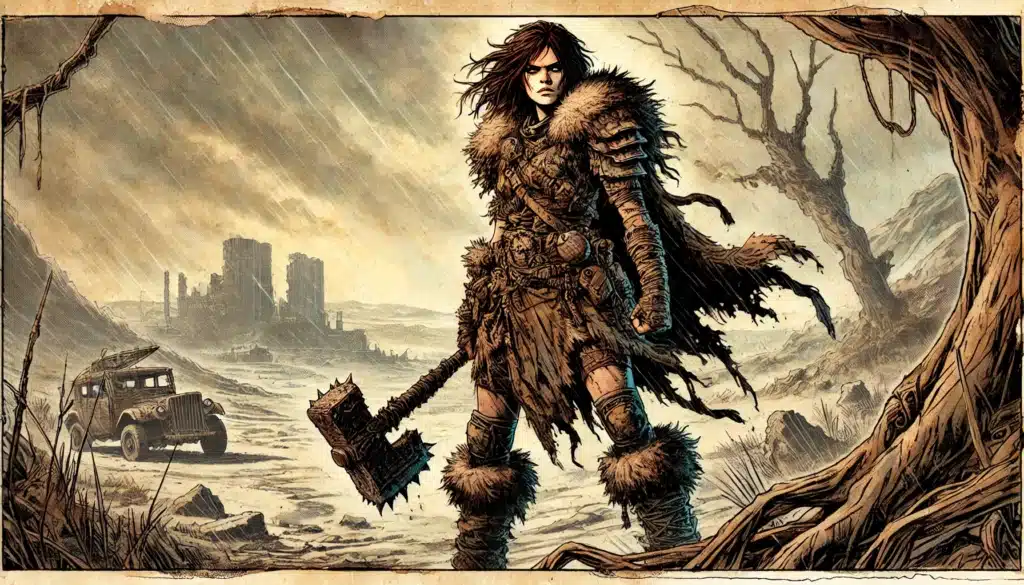
Factions, Settlements, and Power Struggles
In the world’s aftermath, authority is a punchline; power flickers and shifts like candlelight. Factions are built not on bloodlines, but on ideologies, resources, and what little relic tech or knowledge they can command. Some seek to maintain “purity” at all costs, while others worship at the altars of mutation or lost divinity.
Settlements are living organisms, tense and mutable. Water might buy loyalty; control over an artifact might make war inevitable. Compromises are uneasy, and every truce can shatter with a single act of betrayal or theft. Even the largest groups cannot hope to dominate the world forever—there is too little left, and too many fractures to mend.
Factions can be built around philosophies as much as loot: some might forbid salvage from cursed sites, others demand tribute in the form of relics to be kept from their rivals. A group’s greatest resource could be something as simple as a functioning well or a charismatic leader. Ambition, greed, and hope all fuse together in these new halls of power.
Give every faction a face—their leaders are scarred, weird, or luminous. Traits are written in mutation as much as in deed. The DM’s juicy delight is to show players that every rising power is just a few bad days away from collapse.
| Faction Name | Belief System | Major Resource | Key Leader Traits |
|---|---|---|---|
| The Luminous Hand | Mutation as blessing | Radiant relics | Glowing, serene, missing limbs |
| Iron Covenant | Purity through isolation | Untainted food | Stern, masked, militant |
| Wordkeepers | Libraries must be rebuilt | Pre-fall tomes | Eccentric, obsessive, forgetful |
| Ashen Pact | Power from magical fallout | Arcane batteries | Scarred, secretive, brilliant |
| Shardclaw Tribe | Might through adaptation | Monster chitin | Hulking, numerous, tribal |
| Mireborn | Survival above all else | Clean water | Paranoid, diplomatic, scarred |
| Choir of the Lost | Spread the gospel of despair | Healing herbs | Melancholy, prophetic, maimed |
| Gearhearts | Restore pre-fall tech | Salvaged engines | Stoic, mechanical implants |
| Weeping Eyes | Control through prophecy | Cursed idols | Cryptic, blind, obsessive |
| The Last Lantern | Maintain hope and charity | Warm shelter | Compassionate, inspiring, frail |
In this fractured landscape, factions pulse like veins through the body of a world on the brink. They emerge not just from desires for power or control, but from the relentless necessity to survive. Alliances can spark unexpectedly, born from shared desperation or a fleeting moment of mutual benefit. Yet trust is as rare as clean water, and betrayal can cut deeper than any weapon. Players may find themselves navigating a web of old grudges and new ambitions, where even temporary partnerships come with strings that bind tighter than chains. Every decision has profound consequences, echoing through the tenuous fabric of these settlements and determining who thrives and who falls to ruin. Power struggles often manifest more as a clash of ideals than mere brute force. Each settlement holds its own philosophy, shaped by what they’ve salvaged from the past and what they now value in this new world—be it purity, mutation, community, or knowledge. Players can tip the balance of power simply through their choices, crafting, or destroying alliances and shaping the very essence of survival. Will the party choose to rally a coalition of mutants against a purist oppressor, or perhaps broker an uneasy peace between rival factions vying for dwindling resources? In this world after the fall, players are not just participants; they are the architects of tomorrow, wielding influence and forging destinies, often with the remnants of their own losses tucked into their hearts.
New Roles for Classic Monsters
The best monsters aren’t just fodder—they’re echoes of the old world, twisted by apocalypse into threats, puzzles, and living history. Dragons, once legendary tyrants, now limp through irradiated skies, their breath a maelstrom of mutated spores. Liches, desperate to hold onto knowledge, exist as decaying databanks rather than skeletal wizards, trading secrets for servitude or sanity.
Some monsters become environmental hazards—gelatinous cubes reimagined as cleaners in ancient reactors, now absorbing not just flesh but memories. Ogres may operate cargo cannons cobbled together by mad inventors, while owlbears prowl with iron plates hammered into their flesh, the last artifact of a dying tinker’s hand.
Repurpose, remodel, and relabel. Every monster in the bestiary is a potential cipher—an image of survival, hope, horror, or mutation. What matters is that they feel like legacy threats, not just random encounters.
14+ Classic Monsters with Apocalyptic Twists
- Hydra with radioactive, glowing heads
- Gelatinous cube that absorbs and relives memories
- Owlbear with iron plating and glowing eyes
- Wyvern with acid-stream breath (from toxic runoff)
- Lich as a decaying lore server (uploads consciousness)
- Goblins as gas-masked raider chemists
- Zombie swarms with contagious, mutagenic bites
- Trolls regenerated by magical fallout (but unstable)
- Skeletons wielding jury-rigged arcano-guns
- Dragons with rusted, armor-plated scales and spore clouds
- Drowned banshee that controls contaminated floods
- Golems animated by rogue pre-fall AI cores
- Myconids that spread psychic hallucinations
- Mimics disguised as ration crates or supply drops
In this fractured reality, creatures of old have metamorphosed into new threats and allies, adapting to the bleakness of their surroundings. This transformation breathes fresh life into classic monsters, rewriting their narratives as they reflect the trials of a world moved to desperation. Once-fearsome tyrants may now roam the poisoned remnants of cities as reluctant protectors of what little they guard against scavengers and rival factions. These beings serve dual purposes to the players: adversaries wrought from the shadows of the past and potential mentors or allies shaped by shared strife and hardship. Each encounter becomes an exploration of survival tactics, not just combat, with negotiations for survival often hanging in the balance.
In your campaign, feel free to craft these beasts into complex entities, embodying the chaos of the environment that birthed them. Allow their abilities and vulnerabilities to represent environmental hazards and cultural echoes from the time before the fall. As players navigate this new landscape, let them encounter monstrous remnants that offer unique challenges—be it through harrowing encounters or the awkward camaraderie of necessity. Each monster can weave threads of backstory, mystery, and moral ambiguity into the players’ journey, making each confrontation a chance for dialogue, collaboration, or a test of might.
Try my AI Tabletop RPG generators...and an extensive library of content!
| Monster Name | Type | Challenge Rating | Abilities | Notable Behavior |
|---|---|---|---|---|
| Spore Dragon | Dragon | 8 | Breath of Spores: Area poison damage, Spore Affinity: Regenerates HP when in fungal areas | Aloof unless territory is threatened |
| Lich-Coder | Undead | 10 | Data Drain: Can siphon spells, FIle Explosion: Explodes nearby objects as AOE | Offers knowledge in exchange for secrets |
| Iron Ogres | Giant | 5 | Mechanical Resilience: Resistant to non-magical damage, Salvage Slam: Can create shrapnel with physical attacks | Hostile but drawn to valuable tech |
| Gelatinous Archivist | Aberration | 3 | Memory Absorption: Gains knowledge of opponents’ skills and spells, Digestive Archive: Can replicate lost items | Eager to trade information for tech scraps |
| Phantom Wraith | Undead | 7 | Ethereal Grasp: Can phase through objects, Soul Chain: Silences targets temporarily | Haunts places of death, seeking closure |
In a world torn asunder, every monster fulfills an essential role in reinforcing the themes of decay and renewal. Allow encounters to resonate deeply, laying bare the history of both the adversary and the land they inhabit. The tales woven through conflict can illuminate the impact of the apocalypse—not just on the remnants of civilization, but on the very fabric of nature itself. Encourage your players to see the monsters not merely as obstacles, but as reflections of the world’s tragic transformation, making every battle a profound exploration of the story you are collaboratively creating.
As your adventures unfold, remember, each story is an opportunity for players to confront both physical and philosophical battles: Are they saviors, conquerors, or mere survivors? The creatures they encounter could mirror their journey, serving as poignant reminders of what was lost and what must be preserved. The monsters of your post-apocalyptic setting become not just foes to be defeated, but parts of a larger narrative tapestry that invites players to question their motivations and the choices they make, ensuring their journey is as impactful as it is desperate. Engage their emotions, unravel their stories, and let the players shape their fate in this magnificent, shattered world.
Mechanics You Can Reuse or Reinvent
You don’t have to reinvent the wheel to put teeth into your after-the-fall campaign. Borrow systems from survival games—ration clocks, illness tables, weather hazards—and horror RPGs’ stress tracks. Even sci-fi modules hold valuable tools: time-pressure mechanics, radiation exposure, or malfunctioning technology.
⚔️ Fantasy RPG Random Tables Books
Make life as a Gamemaster easier…
If you play Dungeons & Dragons, Pathfinder, or other fantasy RPGs, this
RPG random tables series
is packed with encounters, NPCs, treasure, and more. Available in eBook or print—either way, you’ll have a wealth of adventure ideas at your fingertips.
The key is adaptation. Strip down mechanics until they serve your story. Don’t be afraid to simplify, reskin, or experiment—apocalypse is the land of hybridization, after all. Watch for what players enjoy and refine as you go.
Mixing these outside influences lets your D&D world breathe with fresh, tense life. The best post-apocalyptic campaigns feel familiar—but strange. A reminder that, even in ruins, there’s always something new to discover, endure, or outwit.
Optional Systems for Extra Grit
Layering in additional mechanics amps up tension—but only if it doesn’t drown the story. Use disease tables sparingly, unleash weather when it advances the plot, and pop in morale systems for settlements or NPCs to highlight real risk and reward. Psychological systems—nightmares, trauma effects, and hallucinations—add another layer of consequence and dread.
Just don’t overburden play. The goal is sharp focus, not spreadsheet fatigue. Every detail should serve narrative, or let you spotlight the stakes and sacrifices of survival against a broken world.
12+ Gritty System Tweaks
- Waterlogging rules for gear during storms/floods
- Radiation damage per exposure hour in hot zones
- Hallucination rolls after trauma or spell events
- Infection clocks for wounds or bites
- Settlement morale tied to food/medicine reserves
- Dream tables where dead gods can speak
- Contamination trackers for magical zones
- Extreme weather fatigue from storms/blizzards
- Scavenging mishap tables with risk/reward
- Faction “heat” meters (attention drawn by party actions)
- Insanity points tracking for psychological tolls
- Reputation penalty for cannibalism/theft
- Healing magic with decay chance in magic-dead zones
As you breathe life into the broken world of your campaign, consider employing a “Nightmare System” that magnifies the psychological toll of survival. After intense encounters or moments steeped in loss, characters might roll to resist nightmares that plague their sleep—a chance for vivid, haunting dreams that reflect their fears, regrets, or the bizarre world around them. These nightmares can inflict temporary penalties, casting a shadow over even the brightest bravado, and they offer a pathway for emotional roleplay. Characters could seek solace through therapy or rituals among their companions, cementing bonds in their shared trauma, or find resolve to confront their challenges head-on as they wrestle with their minds and the memories of their past triumphs and failures. Don’t shy away from implementing a “Salvage Fever” mechanic that captures the frantic race to acquire resources in the midst of chaos. When the party stumbles upon a trove of supplies or salvage, characters can experience a surge of adrenaline, causing them to act with wild abandon. Perhaps they must make quick rolls to resist the impulse to hoard or risk unsafe actions, like attracting unwanted attention from lurking dangers. This system cultivates a sense of urgency and excitement, pushing them to navigate both the treasures and the threats with both cunning and desperation. The thrill emerges not just from the discovery itself but from the tantalizing risk of everything unraveling in a heartbeat. Environmental dangers add another layer of grit to your world, inviting players to engage with their surroundings in a visceral way. Consider crafting a “Hazards Tracker,” where seasons or events introduce lethal weather changes, toxic atmospheres, or treacherous landscapes. Players must adapt or risk exposure to these ever-shifting terrors—be it crafting protective gear from scrap or making strategic travel choices. A dust-storm might ratchet up tension as resources dwindle, forcing characters to think creatively in the face of the elements while fostering a deeper connection to the world they seek to survive in. Watching players navigate these perils ignites a sense of camaraderie, as they rally together against an unstable environment bent on snuffing out hope. Finally, the “Cost of Care” component brings moral weight to every healing act and ration distributed. When players decide to help others in need, they should face tangible sacrifices, be it in supplies or health. Maybe a healer’s magic comes with a consequence—granting temporary plague-like symptoms in exchange for quick revitalization, or sharing food puts the party closer to starvation later on. This system not only enriches cooperative storytelling but also elevates the stakes of empathy. It poses the question of what it truly means to survive: is it merely getting by, or can the act of kindness forge a path toward a brighter future? As characters navigate these moral quandaries, their choices will resonate throughout the campaign—a testament to their struggle against the harshness of a world that demands sacrifice.
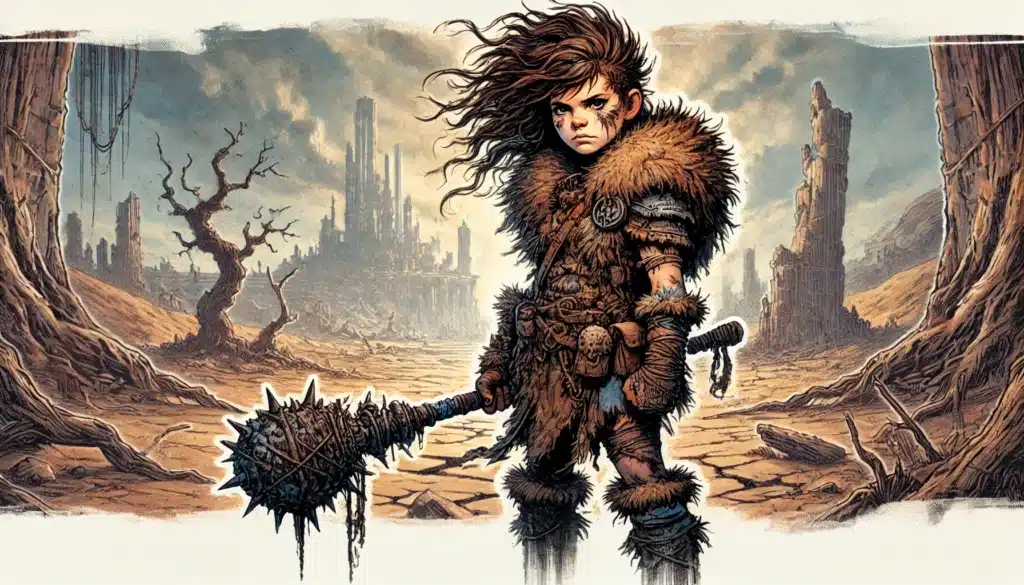
Final Thoughts: Finding Life After the End
Broken worlds are narrative gold. There’s a fierce beauty in ruin, and a sharp, human ache in the stories spun from scarcity, hunger, and hope. To run post-apocalyptic D&D is to embrace the weird—the broken logic of a world made strange and lethal, yes, but also the unbreakable ingenuity of those who wander amid the dust.
Scarcity isn’t a sentence to misery; it’s a forge for creativity. Every torn map, flickering lantern, and improvised tool burns away the bland certainty of old-world abundance. Players become more than adventurers—they’re survivors, visionaries, and the ones who dream in defiance of entropy. When everything is precious and nothing is guaranteed, even the smallest triumph feels profound.
Yet amid the grit, the real heartbeat is hope. The world after the fall is harsh, yes, but not barren. It bristles with the possibility of renewal—a garden sprouting from forgotten seed, an act of forgiveness between old enemies, the laughter at a communal meal. DMs should let these moments breathe, giving players reasons to fight for a future that might never come.
Let post-apocalyptic D&D be weird. Lean into the mutations, the mismatched relics, the haunted faiths, and the stubborn, clashing factions. There is no “right” way—only the will to build, protect, or reinvent something meaningful in the wreckage.
Most of all, remember: After the fall, every act of defiance, kindness, or imagination is a kind of spell—a spark against the dark. Encourage your table to tell bold stories, to embrace the broken and the beautiful. The end is just another beginning.

